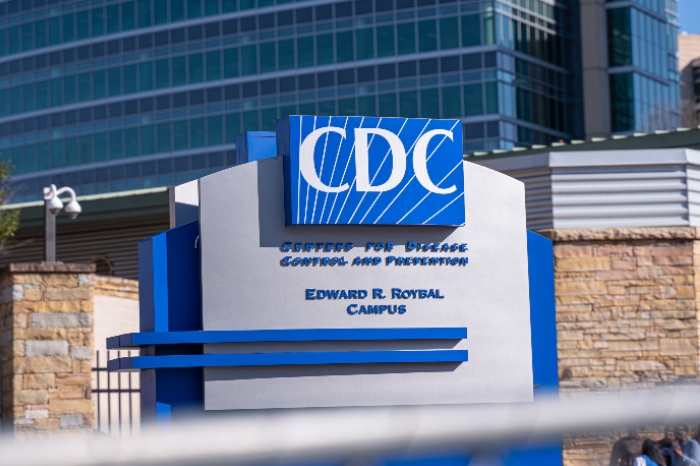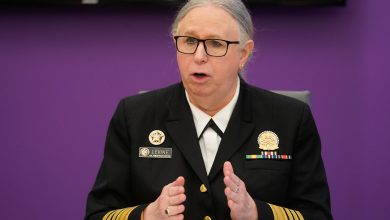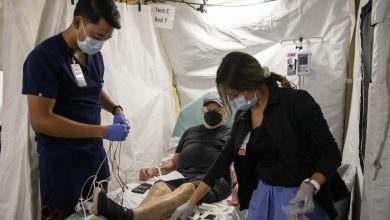CDC Vaccine Advisory Committee: The Hidden Power Behind U.S. Health Policy

When you think about who decides which vaccines children receive at school, which shots adults should get before travel, or which new vaccine a nation will adopt during an outbreak, the face that often comes to mind isn’t a politician or a CEO — it’s a quiet, expert body that meets behind closed doors and in public hearings: the Advisory Committee on Immunization Practices (ACIP). ACIP doesn’t sign laws, but its recommendations ripple through federal programs, insurance coverage rules, state statutes, clinical practice and public behavior. In short, it’s one of the most influential — and least understood — engines of U.S. health policy. How ACIP works, why its advice matters so much, and how recent political and institutional shifts have shone an unexpected light on the committee’s hidden power.
What is ACIP and what does it actually do?
The Advisory Committee on Immunization Practices is a federal advisory committee composed of medical and public-health experts. Created in 1964 to guide the nation’s immunization efforts, ACIP’s core role is to review the scientific evidence on vaccines — safety, efficacy, epidemiology, and programmatic feasibility — and formulate recommendations on how vaccines should be used in the civilian U.S. population. These recommendations form the backbone of both the childhood and adult immunization schedules, which clinicians follow and public-health programs implement.
ACIP meetings are where the technical discussion happens: data are presented by CDC scientists, outside experts, and sometimes manufacturers; evidence tables are debated; votes are taken on specific recommendations such as dosing, target groups, or whether a vaccine should be added to a routine schedule. That deliberative process — the careful weighing of risks and benefits — is what gives ACIP recommendations their legitimacy.
From recommendation to policy: why ACIP’s vote matters
An ACIP recommendation is not a law handed down by Congress, yet its practical effects can be just as binding. Once ACIP votes on a recommendation, it is forwarded to the CDC Director. If the Director adopts the committee’s recommendation, it becomes official CDC policy and is usually published in the Morbidity and Mortality Weekly Report (MMWR). Because many federal programs, state laws, and insurance rules explicitly reference or follow CDC guidance, adoption by the CDC often triggers broad operational and financial consequences. For example, adoption can affect vaccine coverage under private insurance, federal vaccine purchase programs, and inclusion in school-entry requirements in many jurisdictions.
Put simply: ACIP shapes what vaccines doctors recommend, what insurers pay for, and what states may require — which means a small committee’s decisions can determine whether millions of people get a vaccine or not.
A short history: evolution from technical adviser to policy influencer
ACIP began in 1964 as a technical advisory committee to the U.S. Public Health Service. Over the decades, as immunization science grew more complex and vaccine policy became tightly interwoven with insurance and public programs, ACIP accrued broader practical influence. Its recommendations now underpin two main immunization schedules (childhood/adolescent and adult) updated annually and harmonized with professional societies. That slow accretion of influence — from technical adviser to quasi-policy-maker — reflects both the committee’s expert credibility and the need for a consistent national approach to vaccine use.
Why ACIP recommendations carry legal and financial weight
Several mechanisms amplify ACIP’s technical guidance into real-world policy:
- Federal program adoption: Once CDC adopts ACIP recommendations, federal procurement programs (like the Vaccines for Children program) and federal guidance for public-health implementation follow.
- Insurance coverage triggers: For many vaccines, when the CDC adopts an ACIP recommendation, that recommendation can activate coverage requirements under statutes and regulations, which reduces cost barriers for patients.
- State reliance: Nearly every state references CDC guidance and ACIP recommendations in statutes or regulations governing school-entry immunizations and public-health programs. Thus, what ACIP says often becomes the cornerstone of local legal requirements.
Those links — between ACIP technical advice and insurance and state law — explain why the committee’s work is more than academic. A recommendation that a vaccine be “routine” for infants can convert into billions of dollars in programmatic spending and a de facto national standard of care.
The makeup of the committee — expertise, conflict-of-interest rules, and transparency
ACIP members are selected for expertise in fields like pediatrics, infectious disease, epidemiology, immunology and public health. Membership includes both voting experts and liaisons from professional medical societies. To preserve integrity, members must declare potential conflicts of interest and comply with disclosure requirements. The CDC posts conflict-of-interest disclosures for members and meeting agendas publicly. These transparency steps aim to maintain public trust in a body whose decisions can affect millions.
That said, concerns about conflicts of interest and the committee’s composition have periodically surfaced in public debate. Because ACIP’s deliberations intersect with industry, government procurement, and public-health priorities, watchers sometimes scrutinize past affiliations or perceived biases. Federal rules and CDC procedures are intended to manage these risks, but the tension between needed expertise (which may include researchers with industry ties) and public perceptions of impartiality is a recurrent governance challenge.
Recent upheaval and why public attention is rising
Historically, ACIP operated with relative continuity and broad support from medical organizations. That changed when leadership at the Department of Health and Human Services (HHS) undertook a sweeping personnel shift of ACIP members in mid-2025, removing the existing committee and appointing a largely new slate of members. The move, justified by HHS leadership as an effort to restore public trust, immediately raised questions about expertise, independence, and political influence. HHS stated it had removed and would replace the previous members; the change prompted intense coverage and pushback from segments of the public-health establishment.
When a committee that was once technocratic becomes entangled with high-profile political decisions, the downstream consequences multiply: state health departments, insurers, and clinicians all watch closely because ACIP’s outputs affect practice and funding. In several states, officials moved quickly to assert their independence — forming interstate alliances to issue their own vaccine guidance when federal guidance was perceived as uncertain or in flux. That kind of patchwork response shows how deeply ACIP’s stability matters — not just for technical clarity, but for national coordination.
Examples: decisions that changed practice
ACIP’s recommendations have real-world bite. Past notable examples include adding vaccines to the routine childhood schedule (like the HPV vaccine), changing dosing intervals, and issuing age- or risk-specific guidance during outbreaks. A widely publicized recent example involved discussions around the combined MMRV (measles, mumps, rubella, varicella) vaccine: debates over febrile seizure risk versus convenience and missed-vaccination risk led to changes in how the vaccine was recommended for certain age groups. Those kinds of nuanced technical judgments illustrate the committee’s dual role: weighing rare adverse risks against population-level benefits and vaccine uptake realities.
Checks and balances: who watches the committee?
ACIP is not sovereign. Its recommendations go to the CDC Director for adoption; the Director can accept, modify, or ask for more deliberation. Moreover, the committee operates under federal advisory committee rules, including open-meeting requirements and public-comment periods. External organizations — professional societies, state health departments, and academic researchers — also weigh in through liaisons and testimony. These layers are designed to guard both scientific rigor and public accountability, but when political pressure or rapid personnel change occurs, the balance can wobble.
The policy ripple effect: why a committee vote changes lives
Two elements explain the outsized impact of ACIP decisions:
- Operationalization by programs and payers: Health systems, pharmacies, federal programs and insurers often change practice and coverage to align with ACIP-backed CDC policy. That makes implementation fast and broad.
- Legal and regulatory reliance: With many state laws and institutional policies referencing ACIP or CDC guidance, changes in recommendations can trigger legal and regulatory shifts across jurisdictions. This is why states — especially when federal guidance is perceived as inconsistent — may issue their own guidance to protect local public-health priorities.
The reputational stakes: public trust and vaccine confidence
Because vaccines are preventive and given to healthy people (often children), public confidence is essential. ACIP’s deliberations are therefore not simply technical exercises; they are also communications and trust-building moments. Transparent evidence summaries, clear explanations for recommendation choices, and visible conflict disclosure all bolster legitimacy. Conversely, abrupt personnel changes, opaque rationales, or perceived political meddling can erode confidence, reducing uptake and increasing the risk of outbreaks. The committee’s stewardship of both science and trust is therefore a public-health imperative.
What the future might hold
The dynamics around ACIP highlight some structural tensions that will shape vaccine policy for years:
- Federal vs. state coordination: If federal recommendations are perceived as unstable, states may increasingly develop parallel guidance, creating a patchwork system that complicates national outbreak response.
- Expertise vs. perception: Striking the right balance between recruiting top vaccine scientists (who may have industry ties) and maintaining public faith in impartiality will remain a governance task.
- Transparency and engagement: Continued improvements in how evidence is communicated to clinicians, policymakers and the public can reduce confusion when recommendations shift.
How citizens, clinicians and policymakers should think about ACIP
For clinicians: treat ACIP-backed CDC guidance as the national standard of practice, but be prepared to follow state-level adaptations and to explain the evidence to patients when schedules change.
For policymakers: recognize that technical advisory committees like ACIP are force multipliers — small decisions have outsized effects — and preserve processes that safeguard expertise, transparency and independence.
For citizens: remember that ACIP’s purpose is technical and public-health oriented. When you see headlines about committee votes, look for the CDC’s final adoption statement and the MMWR publication that explains the evidence, rationale, and practical implications.
Conclusion
The Advisory Committee on Immunization Practices sits at a curious crossroads: it’s composed of scientists and clinicians, yet its votes reverberate through law, finance, and everyday clinical care. ACIP does not make law, but it shapes the policy architecture that determines who gets vaccinated, when, and at what cost. That hidden power — technical but consequential — is why changes to the committee’s composition or process become high-stakes matters far beyond the conference room where the vote was taken. Preserving the committee’s integrity, transparency, and scientific rigor is therefore not just a bureaucratic nicety; it’s central to the health of the nation.




